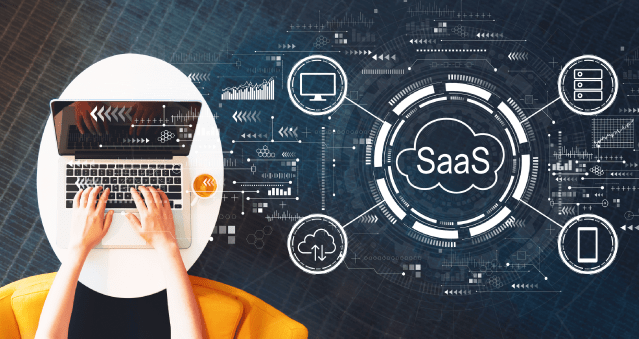Your software as a service (SaaS) business is thriving… congratulations! What you’re probably discovering is that the spreadsheets and manual effort used to track software usage and bill customers is no longer sufficient. Now you need to tackle one of the most important software purchases you’ll ever make – billing. With so many solutions available, how can you be sure that you’re choosing the best SaaS billing software for your company?
Finding the right fit can be tricky, but it doesn’t need to be. This blog serves as a guide to provide you with the information needed to help you select a SaaS billing solution that will meet your specific needs – today and into the future.
When Billing Goes Awry?
Without the best SaaS billing software, you can quickly find yourself in a bad spot. There are numerous reasons why businesses opt to replace their current billing system. Improving profitability is typically high on the list, but billing also plays a critical role in creating customer experiences, keeping your business profitable, and in helping you retain a positive reputation.
Let’s take a closer look at each of these and how your SaaS billing solution can either help to deliver positive results or be a driving factor to negative consequences.
Customer experiences
Although great (or poor) customer experiences are the result of a variety of interactions, complicated or inaccurate bills can be the straw that breaks the proverbial camel’s back. Confusing invoices or unexpected charges can create frustration and erode trust. Ultimately, leaving customers questioning the value of their relationship with a business – which can quickly result in customer churn.
On the other hand, transparent, accurate, and timely bills demonstrate reliability and respect for customers’ time, reinforcing a positive perception of the brand. A seamless billing experience is not just a financial necessity—it’s a critical component of customer satisfaction that directly impacts retention and loyalty.
Profitability
If your billing processes and/or billing software make it difficult to enter data or doesn’t have the intelligence to anticipate and prevent mistakes, you’re at risk of costly billing errors. In addition, delayed invoicing has a domino effect that can reduce your cash flow. Finally, billing systems that lack the ability to connect your critical front- and back-office systems leave you at risk of nonpayment for continued software usage. Some examples include after the customer’s freemium period ends, credit card expires, and more.
Reputation
There are many factors that form a company’s reputation such as news coverage, social media posts, online reviews, word of mouth, etc. Poor billing experiences can lead to a loss in revenue. Did you know that 93% of consumers read online reviews, and a separate study determined that 4 out of 5 customers won’t purchase from companies with negative reviews. What does this mean for revenue and profitability? Negative online content can cause a company to lose 80% of its sales.
Analysts know the best SaaS billing software providers (and those to avoid) since they work with them every day. They thoroughly evaluate billing solutions, and go much deeper than a google search can go. Turn to them to help point you in the right direction.
Functionality and Benefits of the Best SaaS Billing Software
The best SaaS billing software needs to provide three essential components – automation, flexibility, and scalability. Without these core capabilities, you’re at risk of being unable to grow revenue and improve profitability.
From a functionality perspective, here are the seven critical features that your SaaS billing solution needs to provide.
1) Payment gateway
A payment gateway is a technology used by merchants to accept debit or credit card purchases from customers. It securely transmits transaction data to merchant banks and receives responses from issuing banks. Be sure the payment gateway provides a secure architecture that follows PCI security standards and offers DKIM protocol. In addition, it should provide for continual updates and enhancements to ensure that you’re able to meet changing functional needs and regulatory requirements.
2) Merchant accounts
You’ll need a merchant account to receive online payments from your customers. These bank accounts allow you to accept payments from debit or credit cards. Some SaaS billing solutions provide a ‘built-in’ version, while for others it’s behind the scenes.
3) Dynamic invoicing
The SaaS billing software should have the ability to automatically and dynamically generate invoices, populate PDFs, XLS or Word documents with application data, use pre-designed templates, and automate delivery.
4) Revenue recognition
Never an easy process, but when you add recurring revenue into the mix recognizing revenue becomes even more complex and difficult to manage. You need to ensure revenue is recognized as soon as possible while adhering to ASC 606 / IFRS 15 regulations. A rules-based revenue recognition engine takes the guesswork out of when revenue should be recognized. The SaaS billing software needs to provide for real-time sub-ledger transactions and seamlessly integrate with downstream enterprise resource planning (ERP) and accounting systems to ensure that critical metrics are accurately reported.
5) Business intelligence
From dashboards and reports to analytics, etc., you need a variety of business intelligence tools to get an in-depth look at real-time and historical data at a granular level. The SaaS billing software needs to provide the agility and flexibility to slice and dice billing and usage data and extract meaningful information in order to review and compare financial performance – week-to-week, month-to-month, year-to-year, as well as to understand cash flow trends, revenue leakage, deferred revenue, customer churn, retention, etc., and optimize monthly recurring revenue (MRR).
6) Dunning management
Failed payments can quickly deteriorate your profitability. Mitigating the impact requires automated dunning management so that you can quickly and easily schedule and tailor outstanding balance messages to customers, create one or many dunning reminders, as well as manage late fees, account suspensions, and notifications.
7) Subscription management
This is an optional feature depending on whether your company handles customer subscriptions – B2C or B2B. If so, you’ll want to ensure that the billing solution you select allows you to make subscription configurations for things such as invoicing cycles, pricing tiers, terms, mid-cycle changes, discounts, upgrades, downgrades, early terminations, etc.
Depending on what’s appropriate for your business, there may be additional functionality like mediation and internationalization that you should look for in a SaaS billing solution.
Comparing In-House Billing Solutions vs SaaS Billing Software
Once you understand the core features of the best SaaS billing solutions, the next logical question is: should you build your own billing system in-house or invest in subscription billing software?
For many companies, especially those scaling rapidly, this decision affects everything from launch timelines to long-term profitability.
Cost Considerations
Building a billing system for SaaS in-house might appear cost-effective up front, but that perception can be misleading. The true costs include developer salaries, ongoing maintenance, infrastructure, compliance audits, and internal support. On the other hand, a subscription billing platform offers predictable costs and reduced operational overhead over time.
Time to Market
Speed matters. Internal development often takes months – or longer – delaying your ability to roll out new services or pricing strategies. A purpose-built SaaS billing system can be deployed much faster, helping your business adapt to new opportunities or market demands with agility.
Strategic Focus
When internal teams are tied up developing custom billing automation tools, they’re not focused on your core product or growth initiatives. Automated billing systems provided by specialized vendors allow your staff to focus on innovation and customer experience, not billing logic or regulatory updates.
Risk, Compliance, and Maintenance
Handling compliance for accounts receivable, tax rules, and global billing standards like PCI-DSS or GDPR requires constant vigilance. SaaS vendors invest heavily in these areas, so you don’t have to. This reduces your legal exposure and helps protect customer data.
Scalability and Flexibility
A custom solution may handle today’s volume, but what happens as your customer base grows or your pricing changes? Cloud billing software is built to scale with your business and support flexible billing use cases like freemium, tiered pricing, and usage-based billing – without requiring redevelopment.
Innovation and Future Proofing
SaaS vendors often serve hundreds of customers across industries. That means they’re continually improving and rolling out new capabilities. With a SaaS provider, you benefit from a constant stream of innovations – including better reporting, recurring billing, and real-time analytics – without having to build or maintain them yourself.
For a SaaS company looking to grow, compete, and iterate quickly, purchasing the best billing systems often outperforms internal builds on cost, speed, and strategic alignment.
How to Evaluate SaaS Billing Software Vendors
Once you’ve eliminated major bottlenecks, the next step is identifying the right partner. The SaaS billing space is crowded, but evaluating vendors carefully will help you avoid costly missteps.
What to Look For:
- Industry Expertise: Choose a vendor that understands the nuances of subscription billing, including usage-based models, revenue recognition, and global taxation.
- Feature Completeness: Leading vendors offer end-to-end capabilities – from invoicing and mediation to reporting and pricing model management – not just one piece of the puzzle.
- Integration Strength: The best SaaS invoicing solutions provide deep integrations with your ERP, CRM, and payment gateways, enabling faster deployment and less manual work.
- Scalability: Confirm that the platform can handle large volumes, multiple product catalogs, and complex customer hierarchies without breaking.
- Compliance Readiness: Top-tier enterprise billing systems support critical frameworks like SOC 2, PCI-DSS, and ASC 606. This safeguards your data and minimizes audit risk.
- Total Cost of Ownership: Look beyond licensing fees. Factor in onboarding, training, configuration, and future scaling needs over 3–5 years.
- Support and SLAs: Strong vendors back their product with reliable support and clear service level agreements – giving you peace of mind post-launch.
A robust evaluation process will lead you to the best SaaS monetization software for your business model and growth trajectory.
Common Mistakes When Choosing SaaS Billing Software
Even with the best intentions, companies often make preventable errors during the selection process. Here are the most common mistakes – and how to avoid them.
- Overlooking Integration Complexity: Assuming your new subscription billing solution will connect easily with legacy systems is risky. Confirm that the vendor offers strong APIs and native connectors before you commit.
- Ignoring Compliance Standards: Skipping due diligence on security and tax compliance can be costly. A trusted vendor will be certified and up to date on evolving global requirements.
- Prioritizing Price Over TCO: The lowest sticker price may be appealing, but it often lacks critical functionality or requires expensive customizations. Evaluate the true cost over several billing cycles.
- Planning for Today, Not Tomorrow: Your billing needs will change. Choosing a platform that can’t grow with you creates friction and replatforming costs down the road.
- Neglecting User Training: Even the best billing system for SaaS won’t succeed without internal adoption. Include training time and resources in your rollout plan.
- Overlooking Vendor Viability: Pick a vendor with a strong roadmap, funding, and market traction. Ask about release frequency, platform updates, and support structure.
By avoiding these common pitfalls, you’ll increase the likelihood of selecting a billing solution that grows with your company – and eliminates operational headaches instead of causing them.
Eliminate SaaS Billing Software Bottlenecks
As the most frequent communication you have with your customers, your SaaS billing software must be beyond reproach. The best SaaS billing software solution needs to work seamlessly and provide high levels of automation, flexibility, and scalability. Essentially you want to set it up and forget about it.
Unlike other cloud SaaS billing software, BillingPlatform was developed to help companies solve tomorrow’s billing problems, today. Our complete solution fulfills 100% of your business requirements such as mediation, rating, invoicing, collections, reporting, analytics, revenue recognition, and A/R subledger, while enabling you to launch innovative products, packages, and pricing models in hours… not days.
Contact our team today to see how we can help you find the best SaaS billing solution for your needs!



